The role of the Women Army Corps (WACs)
During World War II many Allied countries had Women Army Corps (WACs).
The main tasks of the WACs were to serve in a variety of administrative, technical, and communication roles, allowing men to be deployed to combat roles. The roles of the WACs varied widely and included jobs such as clerks, typists, stenographers, radio operators, mechanics, drivers, nurses and supply personnel.
One of the main objectives of the WAC was to provide critical support to the war effort. The women who joined the WACs were trained and worked alongside male soldiers in a variety of support roles. They also had to undergo basic military training, including physical fitness and military customs and courtesies. In addition to their duties, WACs were also expected to conform to military standards of dress and conduct.
International Developments
The Brits had already a Corps during WWI and restated it during in 1941 under the name Auxiliary Territorial Service (ATS). The United States had the Women’s Army Corps (WAC), established in 1942 and the Australian Women’s Army Service (AWAS) was established in 1941.
In the Netherlands, the Women’s Auxiliary Corps (Vrijwillig Vrouwen Hulpkorps – VHK) was founded in 1939. The VHK was intended to enable women to play an active role in the defence of the Netherlands in the event of war. The VHK consisted of volunteers and the women received military training in first aid, communication, card reading and shooting. After the liberation, the VHK became part of the Royal Netherlands Army and was renamed the Women’s Auxiliary Corps of the Royal Netherlands Army (VHK-KL). However, the VHK-KL was disbanded in 1951.
Women’s Corps of the Royal Dutch East Indies Army (KNIL)
The predecessor of the Women’s Corps of the Royal Netherlands East Indies Army (KNIL) was formed on 30 September 1941, a few months before the Japanese troops invaded the Dutch East Indies in January 1942. The idea to set up a women’s corps came from Mrs. Van Mook, the wife of the then lieutenant-governor-general of the Netherlands East Indies (NEI). The purpose of the corps was identical to the tasks of its sister organisations.
The KNIL Women’s Corps consisted of about 300 women of different ages and different ethnic backgrounds, including Javanese, Ambonese and Dutch. The Corps only existed for a few months because of the Japanese occupation of the Dutch East Indies.
During the war, many of the women of the KNIL Corps continued their work and faced challenging circumstances, such as food and medicine shortages and the threat of Japanese attacks. Some were deployed as nurses in the prison camps where Allied soldiers were held by the Japanese.
Several women of the KNIL Corps took part in the guerrilla war against the Japanese occupation in the NEI. They helped in acts of sabotage and served as liaisons between different groups. They also gathered information about Japanese activities and positions. This information was passed on to Netherland Forces Intelligence Service (NEFIS).
Several women of the KNIL Corps managed to escape the Japanese occupation and joined the Allied forces in Asia. They served in a variety of capacities, including as nurses and as communications and intelligence officers. Some of these women were later evacuated to Australia, where they were reunited with other Dutch forces stationed there. Here they work together with the American WAC. The Dutch and East Indies women were known here as the Dutch WAC.
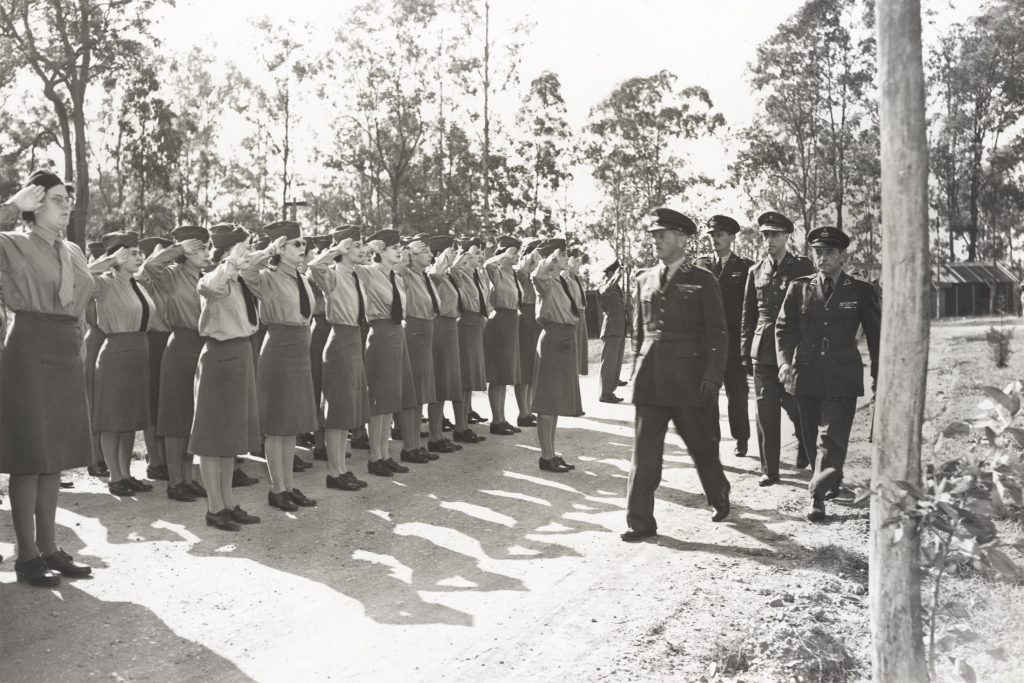
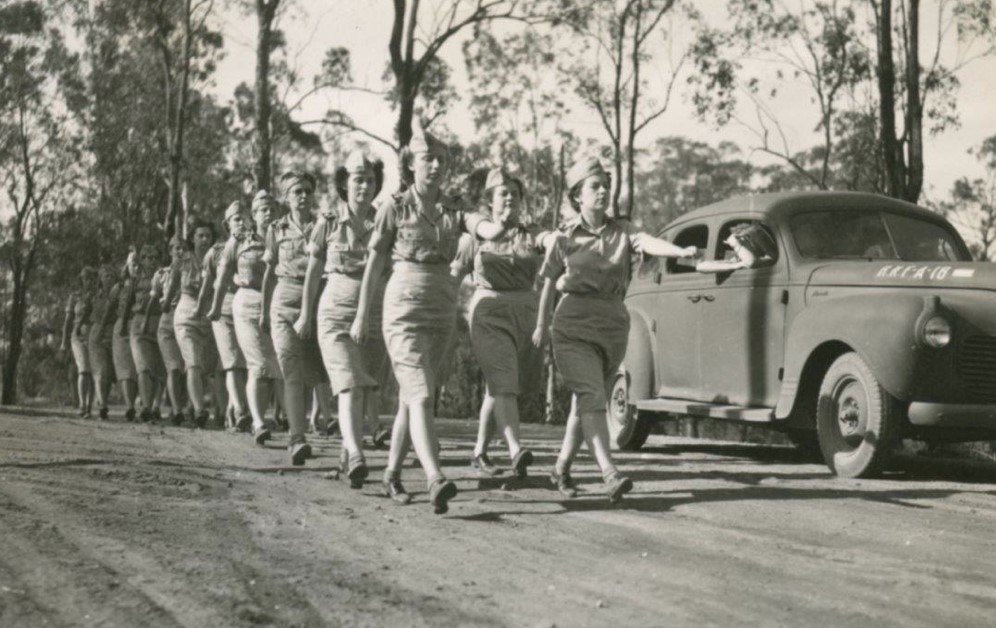

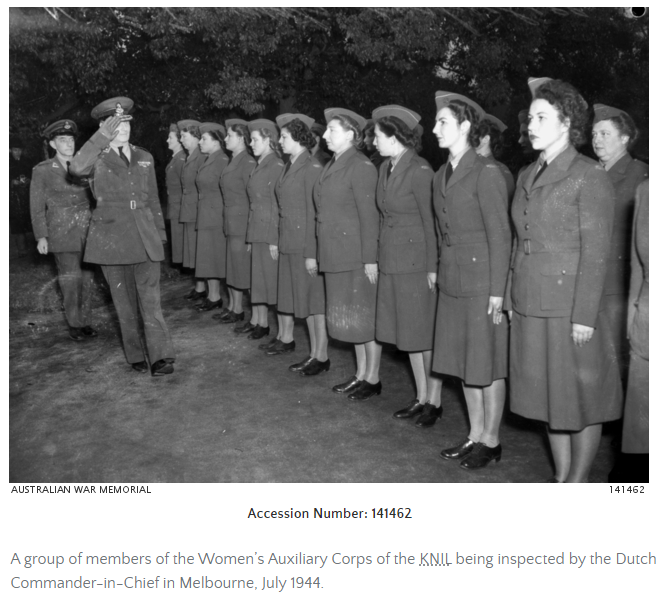
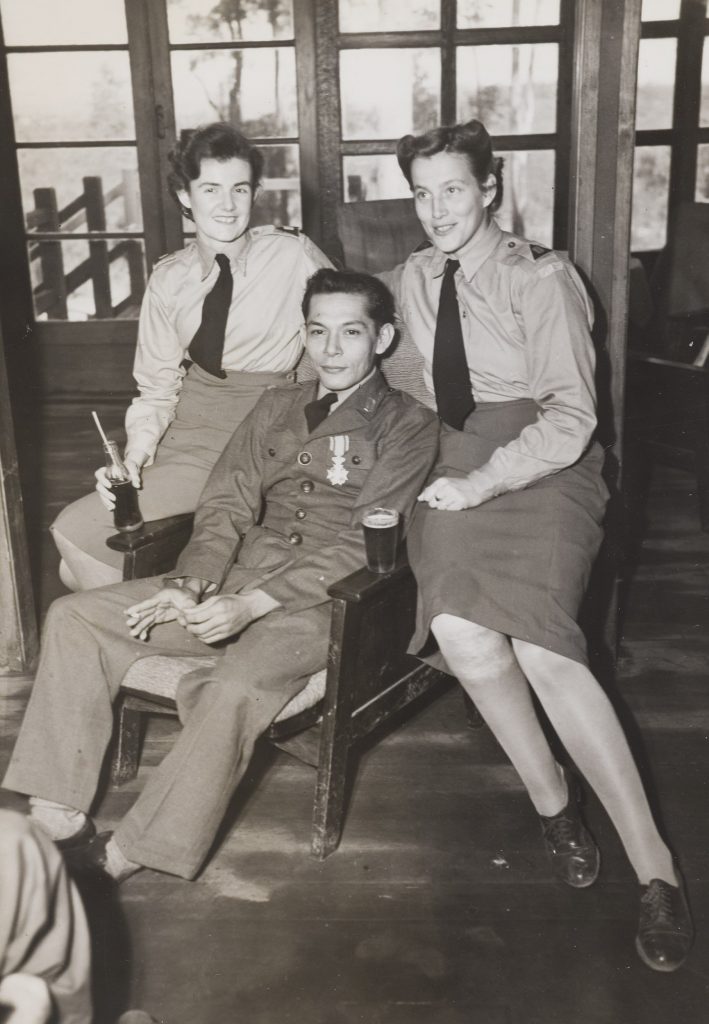
The American WACs at Brisbane
After the bombing of Pearl Harbour, the Americans joined the Allied Forces in WWII. In early 1942, General Douglas MacArthur set up his head office for the liberation of the South West Pacific in Brisbane, where he also established his staging camp, Camp Columbia.
The American facilities stretched over a very large part of south west Brisbane. The American WACs were also involved in this war effort and the US Army had chosen Yeronga Park for a military camp in 1942.
Camp Yeronga Park was part of the wider area of the staging camp and housed a variety of units including, military police, 99th Signal Battalion and the United States Army Services of Supply. The latter also enlisted women from its Women’s Army Corps (WAC).
The Dutch WAC In Australia
The Australian-based Women’s KNIL Corps was established in Melbourne on 5 March 1944. It provided drivers, typists, and nurses or military administrative positions to relieve Dutch or Indonesian males for combat duty. Initially the unit mustered 26 women led by a male officer.
The women also volunteered to sew uniforms and arranged and assisted in Red Cross fundraising.
In September 1944, Dutch and NEI members of the Women’s KNIL Corps joined the Americans at their at Camp Yeronga Park. By that time Camp Columbia was taken over by the Dutch Forces and hosted the NEI Government-in-Exile.
They trained at Yeronga – often together with the American WACs. The American ladies hosted a Welcome Lunch for the Dutchies on 26 September 1944.
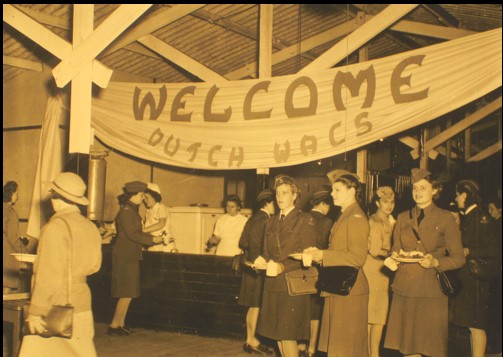

Most of the women were deployed at Camp Columbia. They were hired for various tasks, such as administrative support, medical care and communication, and served as liaisons between Dutch and Allied forces.
In Australia, the Government-in Exile also recruited among the women who, in 1942, had fled to Australia with their husbands. Some women from the Dutch territories in the Caribbean islands were also recruited by the Government-in-exile. There was a ongoing dire shortage of staff at the various offices and facilities at Camp Columbia.

After liberation the women were also involved in organising aid to Dutch prisoners of war and civilians held in Japanese prison camps. Consequently they were demobilised and returned to their homes and communities. Others chose to remain in the army and served the Dutch Army which unsuccessful fought against the independence movement in Indonesia..
The specific actions taken by women of the KNIL Corps are often less well known than those of male soldiers. This is partly because the role of women in the military during the Second World War has often been neglected in historiography.
The Dutch WACs did important work during the Second World War and deserves recognition for their courage and dedication to their country and their fellow soldiers.
Yeronga Memorial Park
Plans for a Memorial for the Dutch and KNIL women has so far failed because of lack of funding. See: Plans for a Memorial for the Dutch WACs

